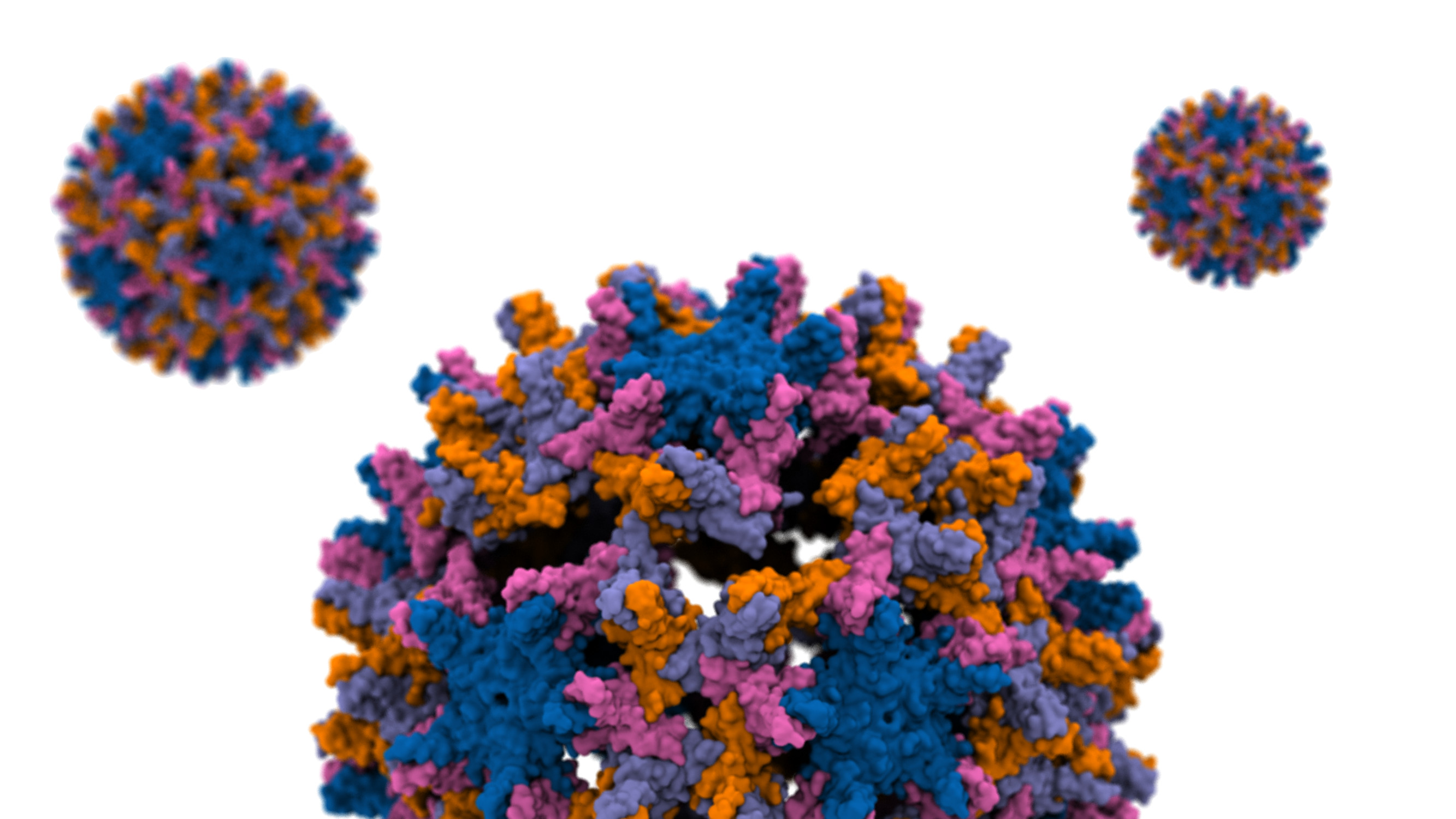Highlights of our Work
2025 | 2024 | 2023 | 2022 | 2021 | 2020 | 2019 | 2018 | 2017 | 2016 | 2015 | 2014 | 2013 | 2012 | 2011 | 2010 | 2009 | 2008 | 2007 | 2006 | 2005 | 2004 | 2003 | 2002 | 2001
The hepatitis B virus (HBV) is one of the smallest human pathogens that infects liver cells chronically affecting ~250 million people globally. The breaking of the HBV capsid leads to the release of its genetic material into the host cell and therefore a key step in its infection. The capsid consists of hundreds of identical protein blocks. Using molecular dynamics simulations with NAMD we devised a mechanical stress to study the process of capsid disassembly in a simulation composed of millions of particles. Analyzing the resulting capsid cracks by VMD we show that the cracks mainly occur within a particular (hexameric) protein arrangements. More importantly, only a small subset of the capsid proteins are engaged in initiating the disassembly. The majority of such hot-spot residues are conserved through evolution, hinting at their importance in the viral infection process, probably by destabilizing the capsid to the right degree. Read more in the Beckman Institute press release and the published article in Proceedings of the National Academy of Sciences.




